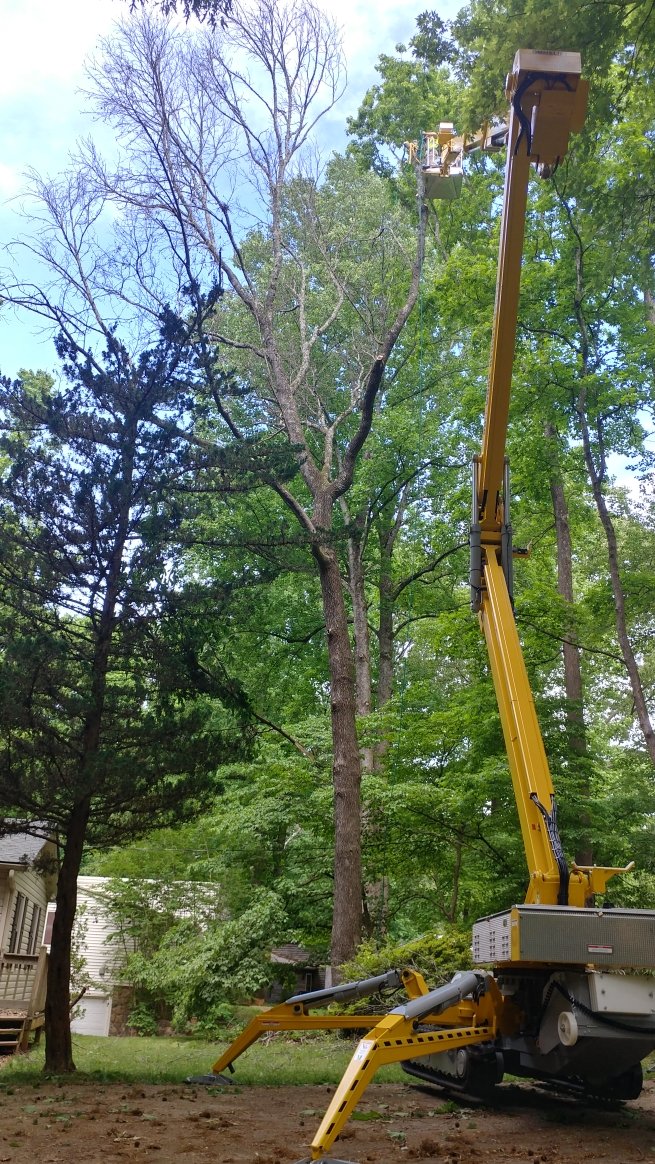Tree Pruning is Important to Healthy Maintenance of Your Property
Tree pruning around your home is an important part of your landscape upkeep as it increases fruit and flower production, encourages strong growth, removes damaged limbs, and improves plant health, all of which can give a tree more aesthetic appeal.
Proper pruning allows trees to grow into specific configurations of branches and limbs that are ideal for trees’ structural integrity. Maintaining a tree’s structure mitigates the risk of falling branches and broken limbs. More importantly, pruning the trees that adorn your property, makes them more productive, healthier, safer, and better looking, not to mention it helps them grow. This type of landscaping can increase the value of your home or business as it highlights the overall look and feel of your property.

What are the Property Risks and Safety Concerns of Not Pruning Trees Regularly?
Keeping your property safe is another reason why regular maintenance and tree pruning is necessary. The lack of proper maintenance and pruning resulting in infestations, diseases, or dead branches can pose a significant risk. This may end up costing you considerably more than you would have spent for preventative maintenance. Tree pruning helps avoid fungal and insect problems as well as preventing the spread of disease as insects and disease are attracted to dead shrubs and branches on trees and can spread to healthy neighboring wood. In addition, branches that are close to windows, power lines, and the side of your house can result in broken windows, scratches on the side of your home and the dangerous risks associated with power lines. During severe storms in heavy winds, branches can easily fall causing severe damage to your home and property, but even worse, someone could get hurt.
Why You Should Leave Tree Pruning to the Professionals
Some people make the mistake of trying to prune trees on their own, thinking it’s an easy job, but many find out the hard way, they were wrong. Would you even know where to cut when pruning a tree? Pruning trees is not as easy as some may think. For example, heading cuts require pruning 1/4 inch above the bud, while sloping down and away from the tree. If you cut too steep or too close, the bud could die. If pruning above nodes that consist of two or more buds, you must remove the ones facing inward.
Why do Trees Need to be Pruned Regularly?
Tree pruning should be done regularly to…
- Provide clearance
- Improve a view
- Decrease branch failure
- Maintain health
- Reduce shade
- Influence growth
What are the Methods of Tree Pruning?
Crown Cleaning
The most common pruning method is crown cleaning, where dead, broken, diseased, or weakly attached branches are removed from the tree’s crown. This method of regular pruning will correct small problems before they become larger ones.
Crown Thinning
To increase air movement or sunlight, select branches can be removed using the crown thinning process. Removing too much foliage can result in adverse effects on the tree. Moreover, the natural shape of the tree should be retained using proper thinning.
Crown Raising
Using the crown raising method, lower branches are removed allowing more sunlight or clearance over the lawn.
Crown Restoration
Using crown restoration to remove dead branches and water sprouts can help to improve the structure and appearance of storm damaged or topped trees.
When to Prune Trees
Non-blooming shrubs and trees should be pruned in the late winter when fully dormant. Summer-blooming shrubs and trees should also be pruned in late winter. Spring-blooming shrubs and trees should be pruned immediately after they bloom. Keep in mind that if pruning is done in early spring or late winter, just before bud swell, tree growth is maximized. Routine tree pruning can be done at any time to remove diseased, weak, undesirable, or dead limbs from trees with little effect on them.
Call now, for a free quote for E-Z Out Tree. 770.822.9843.
